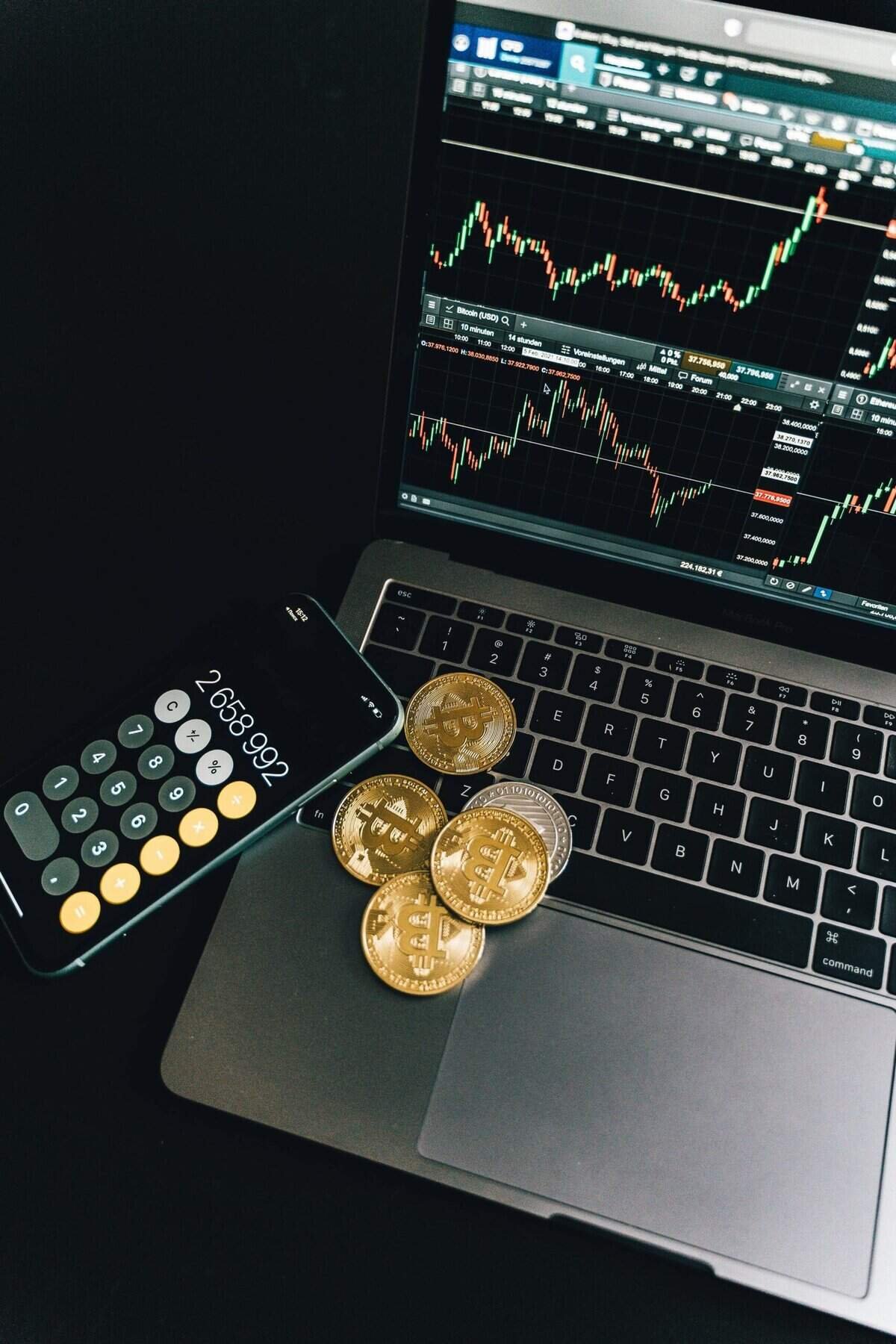Are you wondering how Latin America is using crypto in 2025 and what that means for your money, business, or digital life?

How Is Latin America Using Crypto In 2025?
This article breaks down how people, companies, and governments across Latin America are using cryptocurrencies and tokenized systems in 2025. You’ll get practical examples, regulatory patterns, and real-world use cases so you can understand the region’s crypto landscape.
Regional overview: a patchwork of adoption and innovation
Latin America is not a single market — it’s a mosaic of countries with different economic pressures, regulatory choices, energy profiles, and tech ecosystems. You’ll find hyper-adoption in places facing high inflation, steady institutional integration in larger economies, and experimental policy moves from several central banks.
Most activity falls into a few broad buckets: payments and remittances, hedging and savings, commerce and payroll, DeFi and tokenization, mining and infrastructure, and government-led digital currency pilots. Each country emphasizes different buckets depending on local conditions.
Why crypto matters in Latin America now
Cryptocurrencies are attractive to many people in the region for reasons that go beyond speculative trading. They offer faster cross-border transfers, an alternative to unstable local currencies, improved access to financial services for the unbanked, and new business models for creators and small enterprises.
If you’re living or doing business there, crypto can reduce fees, speed up settlement, and give you more ways to move value across borders — but it also brings regulatory and operational complexity you need to manage.
Major use cases in 2025
You’ll see crypto used in several well-defined ways across Latin America. Each use case reflects local needs and the maturity of the market.
1) Remittances and cross-border payments
Remittances remain one of the clearest, high-impact use cases. You can receive remittances via stablecoins or crypto wallets and convert to local currency with lower fees and faster settlement than many traditional channels. This is especially valuable where banking access is limited or where traditional remittance fees are a heavy burden.
Remittance flows often route through stablecoins such as USDT and USDC, and some remittance companies and fintechs now offer seamless on/off ramps integrated into mobile apps.
2) Inflation hedge and savings
In countries with volatile inflation, people still use crypto as a hedge. You’ll encounter households and small businesses in places with depreciating fiat choosing stablecoins or global cryptocurrencies to preserve value.
That said, using crypto as a hedge requires an understanding of counterparty risk (exchange solvency, custodial risk), regulatory changes, and liquidity. You’ll want diversified approaches and safe onboarding rails.
3) Everyday payments and merchant acceptance
More merchants accept crypto for in-person and online payments, often through payment processors that convert received crypto into fiat instantly. If you run a small business, accepting crypto can reduce card fees and open cross-border customers, but you must handle tax reporting and reconciliation.
Point-of-sale solutions and payment gateways have improved, making crypto acceptance almost as plug-and-play as card acceptance in some urban areas.
4) Payroll and gig economy payouts
Some employers and platforms pay freelancers and gig workers partially or fully in crypto. You can receive earnings faster and with lower transfer costs, especially when you or your employer are cross-border. Many payroll solutions offer conversion services so you don’t have to hold crypto if you prefer fiat.
This use case is popular among digital workers and decentralized teams, and it continues to grow as payroll tooling becomes more compliant and user-friendly.
5) DeFi lending, borrowing, and yields
DeFi activity has matured, and you can access lending, borrowing, and yield strategies. Many Latin American users leverage DeFi to get dollar-denominated yields or to obtain liquidity without traditional bank credit lines.
You must evaluate smart contract risk, platform audits, and the consequences of volatile collateral. DeFi gives you new financial primitives, but they carry technical and systemic risks.
6) NFTs, tokenized assets, and creator economies
Creators use NFTs and tokenized access to monetize art, music, and local cultural assets. You can buy or sell NFTs tied to concert tickets, limited-edition products, or fractionalized ownership of real estate and small businesses.
Tokenization projects often aim to increase liquidity and lower the barriers to asset investment, but they require clear legal frameworks and consumer protection to scale responsibly.
7) Mining and energy synergy
Mining still exists, often where electricity is cheap or renewable. If you’re in a region with surplus hydroelectric or wind power, setting up mining operations can convert intermittently available energy into revenue. Mining also faces scrutiny from regulators and communities, so environmental and social considerations are critical.
Countries take different stances: some incentivize and attract miners, while others impose restrictions or taxes.
Country case studies: what you need to know
This table summarizes notable characteristics across selected countries in 2025. It gives you a quick snapshot of regulation, primary crypto use cases, and practical notes.
| Country | Regulatory stance (2025) | Primary use cases | Practical notes for you |
|---|---|---|---|
| Argentina | High user adoption; regulatory framework evolving | Savings/hedge, remittances, P2P trading | Inflation drives crypto use; watch for tax reporting rules |
| Brazil | Active regulation and CBDC piloting; robust exchanges | Institutional trading, payments, CBDC integration | Strong infrastructure and fintech partnerships; Real Digital pilots |
| Mexico | Developing regulatory clarity; fintech integration | Remittances, merchant payments, wallets | Large remittance corridor with the US; P2P remains popular |
| Colombia | Growing startup scene; progressive fintech policies | Remittances, DeFi adoption, payments | Local exchanges expanding; municipal pilots for payments |
| Venezuela | Widespread crypto use for survival; sanctions complicate flows | Remittances, commerce, USD-stablecoins | Crypto used as real utility where fiat is constrained |
| El Salvador | Bitcoin accepted as legal tender; mixed local performance | Payments, tourism, Bitcoin-based services | Chivo wallet and Bitcoin ATM network persist; mixed economic effects |
| Panama | Pro-crypto legislation and business-friendly policies | Corporate services, tokenization, payments | Attractive for crypto companies seeking legal clarity |
| Paraguay | Energy-exporting mining potential; growing interest | Mining hubs, enterprise projects | Cheap hydropower attracts miners but local policy evolves |
Note: This table is a high-level guide. Local laws and market specifics change — always do current, country-specific due diligence.
Regulation and policy patterns you should expect
Regulation in Latin America is diverse. You’ll find several recurring patterns that shape how crypto is used:
- Patchwork frameworks: Many countries continue to apply pieces of regulation (tax rules, AML/KYC, licensing) without a unified crypto law. This creates operational complexity for cross-border services.
- Consumer protection focus: Regulators increasingly emphasize fraud prevention, disclosure, and custody safeguards as user adoption rises.
- CBDC experimentation: Several central banks run pilots to issue digital currencies or to understand tokenized money. These pilots affect how public and private digital money interact.
- Taxation: Tax authorities are expanding reporting requirements. You’ll need to track capital gains, income, and VAT implications on crypto transactions.
- Licensing and exchange oversight: Exchanges face licensing and AML/KYC demands; this raises the bar for custodial safety but can limit small, local players.
If you operate across countries, you should budget for legal and compliance resources and consider local partnerships.

Central bank digital currencies (CBDCs) and government projects
In 2025, many central banks in the region have moved from research to pilot phases. If you follow central bank announcements, you’ll notice several themes:
- Interoperability goals: Central banks want their digital currency to work with existing payment rails and with private stablecoins to reduce fragmentation.
- Financial inclusion experiments: CBDC pilots often target last-mile payments or government-to-person disbursements to reach the unbanked.
- Not a replacement for cash overnight: Many central banks position CBDCs as complementary to cash, not a forced replacement.
If you’re watching for opportunities, CBDC pilots may create integration contracts for fintechs and wallets, while also changing how private crypto services must comply with monetary policy controls.
Stablecoins: the rails for remittances and commerce
Stablecoins continue to be foundational for regional crypto use. You’ll see USD-pegged stablecoins dominate because they offer a stable unit of account and reduce currency conversion friction.
Key implications for you:
- Liquidity: Major stablecoins generally have deep liquidity on exchanges and P2P platforms, making them practical for remittances and merchant settlement.
- Regulatory attention: Authorities scrutinize reserve transparency and issuer compliance, so stablecoin usage can be affected by issuer policies and local regulation.
- On/off ramps: The availability of fiat on/off ramps (local bank transfers, payment processors) shapes how easily you can use stablecoins day-to-day.
Infrastructure: wallets, exchanges, and on/off ramps
Your ability to use crypto depends on infrastructure: reliable wallets, compliant exchanges, and local fiat channels. Improvements in custody, API integrations, and mobile-first user interfaces have made crypto more accessible in the region.
You’ll find several platform types:
- Local exchanges with country-specific fiat onboarding.
- Global exchanges and P2P markets offering access to dollar-stable assets.
- Non-custodial wallets that give you self-custody but require security knowledge.
- Custodial wallets provided by regulated fintechs for easier consumer adoption.
If you’re new to crypto, choose platforms with strong compliance, good liquidity, and clear client protections.

Payments and merchant adoption: what it looks like on the ground
Crypto payments moved from niche to mainstream in many urban centers. You’ll encounter restaurants, e-commerce sites, and tourism services that accept crypto, often through a payment processor that converts instantly to local currency to avoid volatility.
Benefits for you:
- Lower fees for cross-border sales.
- Instant settlement options for merchants and marketplaces.
- New customer segments who prefer crypto.
Challenges:
- Accounting and tax treatment can be manual.
- Volatility management if you hold crypto.
- Education needed for staff and customers.
DeFi and risk management
DeFi adoption is growing but remains risk-sensitive. If you’re participating, you must account for smart contract risk, liquidity risk, regulatory exposure, and counterparty risk. Some Latin American users prefer DeFi to get higher yields or USD exposure, but the sophistication required is higher than using centralized services.
What to watch:
- Audits and insurance products for smart contract risk.
- Regulatory actions targeting DeFi intermediaries or protocols.
- Developed local custody and onboarding services that can bridge DeFi and traditional rails.
Tokenization: land, commodities, and cultural assets
Tokenization evolved beyond marketing NFTs to include real-world assets. You can participate in tokenized real estate, agricultural commodities, and cultural projects that aim to fractionalize ownership and increase liquidity.
Practical points:
- Legal enforceability: Tokenized claims require clear legal frameworks to represent ownership.
- Local markets: Tokenization projects often target diaspora investors and global buyers to raise capital efficiently.
- Due diligence: Verify the legal structure, custodial arrangement, and redemption mechanics before investing.

Mining and energy dynamics: a regional perspective
Mining operations still follow energy economics. If you’re assessing mining in Latin America, consider hydropower in Paraguay and parts of Brazil, stranded renewable assets in rural zones, and industrial power pricing.
Considerations for you:
- Partnerships with local communities and governments are crucial.
- Environmental scrutiny and carbon considerations affect permitting and social license to operate.
- Grid stability and energy policy can change profitability quickly.
Financial inclusion: real impact and limits
Crypto has genuine benefits for the unbanked by lowering barriers to entry and enabling person-to-person transfers without long bank histories. However, inclusion depends on mobile connectivity, education, and local financial literacy initiatives.
For meaningful impact:
- Simple, secure wallet UX is essential.
- Integrated onramps that convert to/from local fiat increase adoption.
- Education and dispute-resolution mechanisms protect vulnerable users.
Risks you should manage
Crypto brings opportunity but several real risks you must manage as a user or business:
- Regulatory risk: Changing rules can impact access and legality.
- Custodial risk: Centralized platforms can fail; self-custody demands security skills.
- Market risk: Volatility can cause rapid loss if unhedged.
- Fraud and scams: Phishing, fake investment schemes, and rug pulls remain prevalent.
- Operational risk: Liquidity, settlement, and integration issues can disrupt business flows.
Mitigation steps include using regulated providers, diversified custody strategies, formal compliance processes, and strong cybersecurity practices.

How businesses are adapting: payments, treasury, and fundraising
Businesses use crypto in three main ways: accept crypto payments, hold crypto treasury for dollar diversification, and raise capital through token sales or tokenized equity.
Practical advice:
- For payments: integrate with reliable payment processors to avoid crypto volatility.
- For treasury: establish clear policies on allocation and risk tolerance.
- For fundraising: get legal counsel to ensure token sales comply with securities laws and AML/KYC.
The tax landscape: what you need to do
Tax authorities are tightening reporting. If you transact in crypto, you must track gains, income, and VAT/consumption tax where applicable. Many countries require exchanges to report client transaction data.
Action steps:
- Keep detailed transaction records.
- Consult local tax specialists.
- Use tools that integrate wallet/exchange data for tax reporting.
Consumer protection and scams: practical steps for safety
You’ll encounter scams and frauds. Stay safe by using hardware wallets for sizable holdings, enabling multi-factor authentication, and avoiding unsolicited investment pitches.
Simple safeguards:
- Verify platforms’ regulatory status.
- Use reputable custodians for large balances.
- Confirm transaction addresses and amounts before sending.
Opportunities for developers and entrepreneurs
Developers and founders have many paths: build local liquidity solutions, wallet UX for low-bandwidth contexts, compliance tools, tokenization platforms, and vertical DeFi products tailored to regional needs (agriculture lending, remittance rails).
If you’re thinking of starting, focus on interoperability with local banks, strong AML/KYC tooling, and mobile-first designs that meet users where they are.
What to expect next: trends through 2026 and beyond
Several trends will likely shape the next phase in Latin America:
- Greater regulatory clarity: Expect more country-specific rules and licensing.
- Public-private integration: CBDC pilots will push integration between central banks and private wallets.
- Institutionalization: More traditional financial institutions will offer custody and trading services.
- Localized DeFi: DeFi products tailored to local credit cycles and collateral types will grow.
- Sustainability focus: Mining and energy-first projects will emphasize renewable sources and community benefits.
These shifts will create new opportunities and challenges for you as a user, entrepreneur, or policymaker.
How to get started or scale safely
If you want to get involved in crypto in Latin America, follow these steps:
- Learn the basics: wallets, custody, stablecoins, and on/off ramps.
- Choose regulated and reputable providers for custody and exchange services.
- Use small pilot projects for business integration (start with a portion of revenue).
- Consult local legal and tax professionals before onboarding customers or launching products.
- Prioritize user education and fraud prevention.
These steps will lower your entry risk while letting you capture key benefits.
Quick checklist for individuals
This short checklist helps you act safely if you’re using crypto:
- Secure your keys: use hardware wallets for long-term holdings.
- Enable MFA and strong passwords on exchanges and wallets.
- Keep records for tax purposes.
- Start with stablecoins for remittances and payments if you want low volatility.
- Beware of unsolicited investment schemes.
Quick checklist for businesses
If you run a business, use this operational checklist:
- Choose payment processors with conversion options to local fiat.
- Define treasury policies for crypto holdings.
- Ensure AML/KYC processes meet local regulator expectations.
- Integrate accounting and tax reporting systems for crypto flows.
- Educate staff and customers about crypto use and risks.
Examples: everyday scenarios you might encounter
- Receiving a remittance from family abroad in stablecoins, converting to local bank account within hours and paying lower fees than a bank transfer.
- A small e-commerce shop accepting crypto via a processor that automatically converts 90% to local currency to limit volatility exposure.
- A freelance designer getting paid in crypto by a US client and converting part of earnings to stablecoins for savings.
- A municipality piloting tokenized vouchers for social programs, redeemable at local participating merchants.
These scenarios show practical benefits and highlight the need for clear compliance and user education.
Conclusion: practical outlook for you in 2025
Latin America in 2025 is an active crypto region where real utility meets regulatory complexity. You can benefit from lower remittance costs, new payment rails, and creative tokenization projects — but you must manage legal, tax, and security risks.
If you’re engaging with crypto here, be pragmatic: use reputable custodians and exchanges, keep excellent records, and stay updated on local regulations. With the right safeguards, crypto is a powerful tool that can expand your financial options, speed up cross-border commerce, and open new business models in the region.
If you want, I can provide a deeper guide tailored to a specific country in Latin America or a checklist for setting up crypto payments for your business. Which country or use case would you like to focus on?
